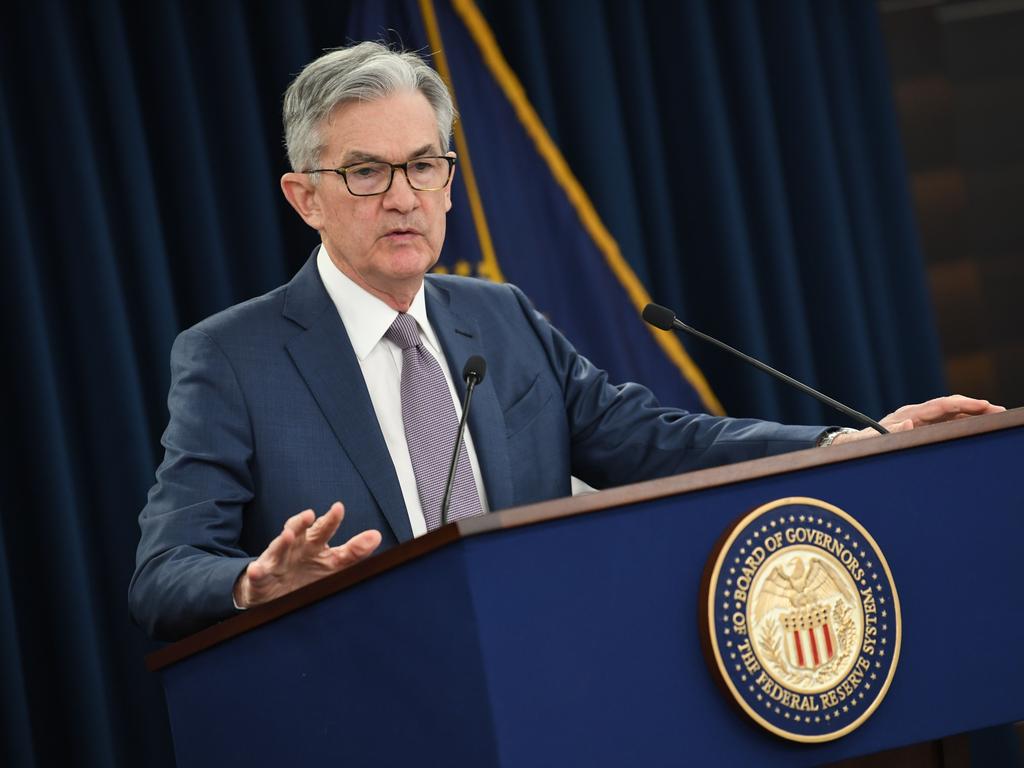
The unknown factor — for Australia and the world — is how long the medical crisis lasts and how far it extends. The Morrison government is forced to deepen its assessment of the damage on a daily basis.
But history, notably our experience during the global financial crisis, reveals the sheer difficulty for forecasters in gauging the scale of the downturn.
Yet this is the “make or break” issue. Treasury has told the government the solution to the challenge is, in many senses, more complicated than combating the 2008-09 GFC where Kevin Rudd and Wayne Swan acted on the response made famous by Treasury chief Ken Henry: “Go early, go hard, go households.” This prescription doesn’t work in 2020.
This is because the crisis 12 years ago originated with a huge failure in the overseas financial and banking system precipitating a liquidity and demand meltdown. The response was bold yet conventional in the form of large-scale fiscal stimulus and moves to stabilise the banking system.
Scott Morrison has taken to heart the Treasury advice from secretary Steven Kennedy. “We are not interested in solving the wrong problem,” the Prime Minister says. Dead right. He says the global threat is “different” from 12 years ago. This time the disruption originates with Chinese tourists and students not travelling, factories being closed, services being scaled back and trade being ruptured — hence threats to our travel, tertiary education, construction and many other businesses. But there is no problem with capital, no issue with bank balance sheets.
Australia’s response, Morrison said yesterday, will be “targeted, measured and scalable”. He doesn’t use the word “modest” any more. He says the recovery may be U-shaped, not V-shaped, meaning a more protracted delay before the economy bounces back. In short, the outlook is deteriorating. That means the government’s spending response will be larger and the economic policy change more significant.
The surplus will be lost in this deterioration and response. This was the assumption in the language Morrison used yesterday. He no longer defends the idea of the surplus. He highlights, instead, the government’s commitment to “the structural integrity of the budget” — decoded this means when the virus is over and the economy returns to normal, that normal will see the budget re-emerge from deficit to surplus.
The focus of the government’s response, Morrison says, will be “jobs, cashflow and investment”. He wants to keep businesses and industries afloat, avoid lay-offs and keep the government’s credibility on jobs creation. A rout in the labour market would be a serious political blow. With the economy in below-trend growth the government desperately needs its low unemployment credentials.
But Morrison argues another pivotal proposition. He said yesterday his government would not repeat the mistakes of previous governments — that is, he will not repeat the mistake of the Rudd government in its GFC response. This is an issue of historical and ongoing dispute. Labor believes its fiscal stimulus saved the country from recession while the Liberals believe the scale of the stimulus ($10bn and $42bn in two packages) was excessive and that its components (pink batts and school halls) were disasters.
So Morrison, ahead of unveiling his fiscal response, identifies the former Labor model as a mistake to be avoided. How might Labor respond when it sees Morrison’s package? We shall see — but we know that the Turnbull-led opposition in early 2009 rejected Labor’s position and came down in favour of a far more limited $20bnspend.
This was one of Turnbull’s most important decisions as Liberal leader. At this point the Liberals signed up to the campaign based on debts, deficits and waste against Labor that carried them four years later to victory at the 2013 election.
The Labor stimulus was decisive in Australia avoiding recession. But it had three widely recognised defects — it was too large; it extended for far too long; and some of the components were flawed. Labor’s overkill meant that having gone into deficit, it stayed in deficit and, at the end, kept spending ahead of the 2013 election, doing serious damage to its economic standing.
In a sense Labor has never recovered. What the party sees as its greatest victory has permanently stained its economic credentials. The first lesson for Morrison and Josh Frydenberg, therefore, is to get right the scale of economic threat. And that’s almost impossible. The second lesson is to get the response right. That’s equally hard.
But Morrison needs to remember that Labor denied the recession that seemed inevitable. The worst mistake Morrison could make would be to undershoot on the economic boost, find the March and June quarters go negative and that he has a recession on his watch. The Liberals would live with this humiliation for decades. It would be a devastating result for Morrison. Just think of Labor’s retort: our government denied recession during the GFC but your government failed the test in a lesser crisis.
Morrison is right to call this a different, less severe economic event. But if Labor’s weakness was overkill, Morrison needs to avoid underkill. Much will depend on Treasury’s judgment. Morrison, so far, doesn’t use the word stimulus. Morrison and Frydenberg want a targeted, not an across-the-board, boost to enterprises. This is an accurate reading now. Will it be accurate in 10 days?
OECD chief economist Laurence Boone said under a “best case” scenario of mainly containment to China, world growth was being sharply revised from the already subdued 3 per cent to 2.4 per cent, the lowest since the GFC. This is a grim best case. In the downside scenario where the epidemic spreads globally, Boone said world growth could plummet to 1.5 per cent with many nations in recession.
Morrison, in fact, is thinking both short-term and long-term. In the short term he wants to save jobs and business, and in the longer term he wants to ensure that when the economy bounces back the surplus is sitting there. Because this is a health-induced crisis Morrison sees it as finite: his message is the country will get through “to the other side” and enjoy the uplands.
In the meantime hang on for more volatility. It’s why the Reserve Bank rate cut was the right move. With the US Federal Reserve signalling it was likely to cut, the Reserve Bank had few options. The statement from governor Philip Lowe made clear the decision was driven entirely by the coronavirus consequences. It cannot cure the problem but it can help check the panic.
The Monday consultation involving Morrison, Frydenberg, Treasury chief Steven Kennedy, Lowe and deputy governor Guy Debelle was designed to align the government and the bank and ensure that the response would involve fiscal and monetary policy working in the same direction.
“We are highly aligned,” Morrison said. And the rate cut reinforces his remark. The Reserve Bank, however, may have been in a better position had it avoided most of the 0.75 per cent cash rate cut last year with its dubious impact on confidence.
These economic events shape and reveal the character of governments. In 2008-09 Rudd was psychologically ready – he told his cabinet they must avoid becoming the second Scullin government, called the situation “the economic equivalent of a rolling national security crisis” and pressed the button on huge fiscal stimulus.
Morrison is still working his way to his response. He sees the challenge flowing from a health crisis disrupting a normal economy but recognises the global dynamic is leading to more downside. Morrison knows, as he says, the aim is to solve today’s problem, not last week’s problem, not last decade’s problem.








The coronavirus economic fallout demands a mainly fiscal response — and this is coming from the Morrison government — yet the Reserve Bank’s interest rate cut yesterday, while not able to fix the problem, is a prudent step in checking panic and the crisis of confidence.